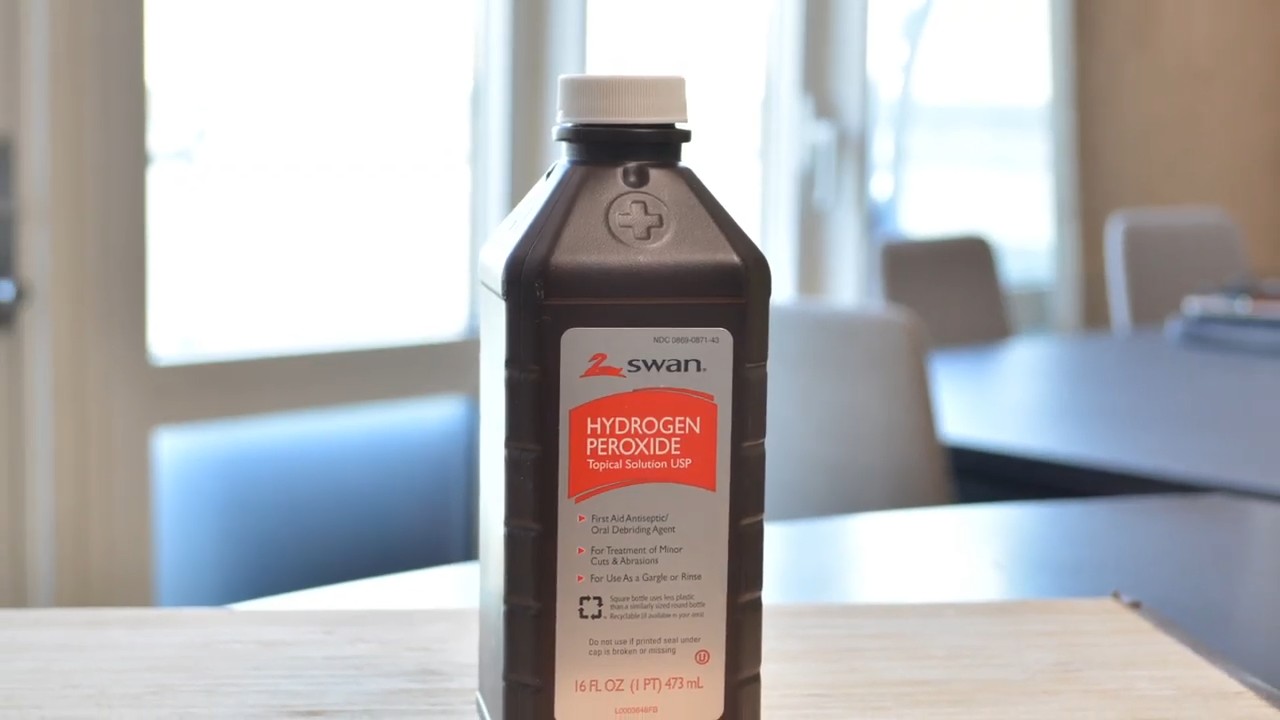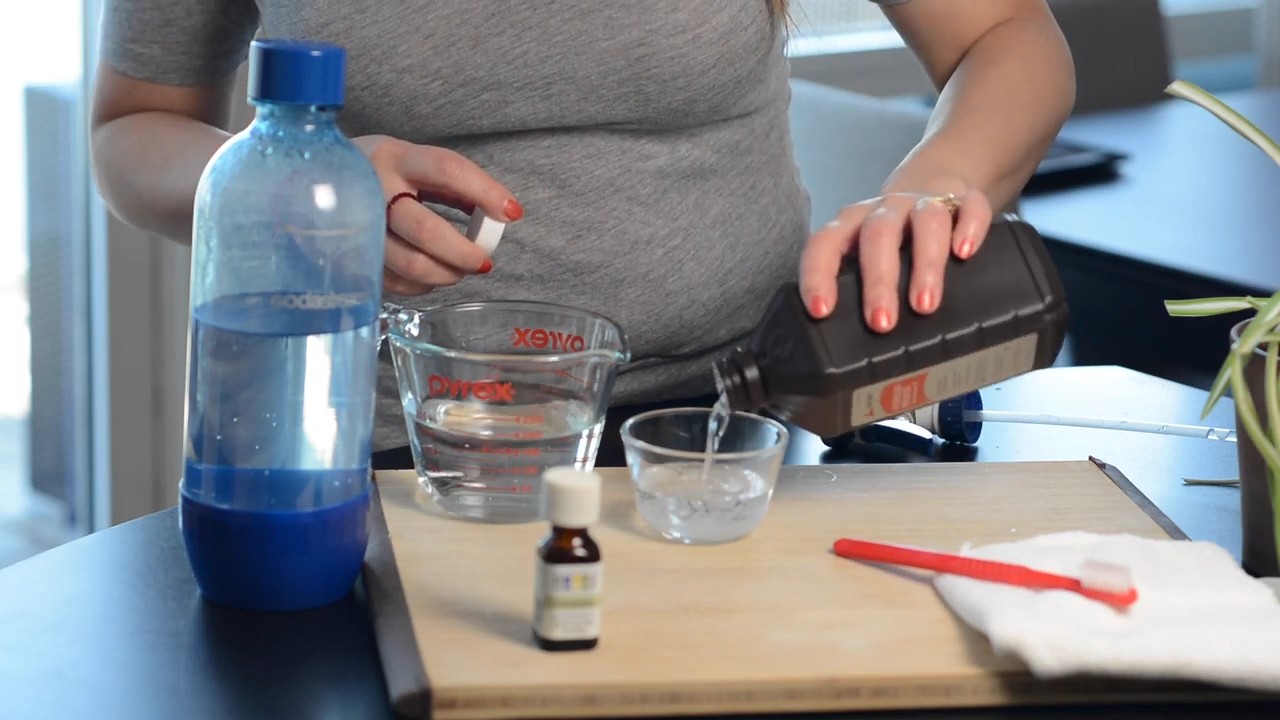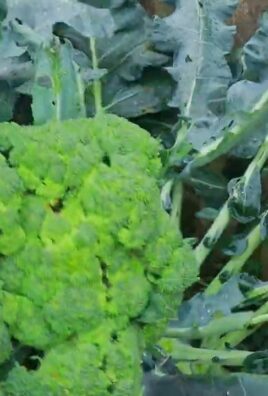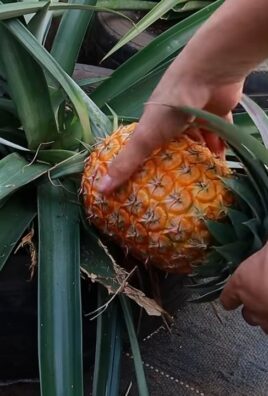Growing Fresh Dill at home is easier than you might think, and I’m here to show you how! Have you ever been frustrated by the wilted, lackluster dill you find at the grocery store? Or maybe you’re tired of paying a premium for those tiny, overpriced bunches? Well, fret no more! This DIY guide is your ticket to a constant supply of fragrant, flavorful dill, right at your fingertips.
Dill has a rich history, dating back to ancient Egypt and Rome, where it was used for medicinal purposes and as a symbol of good luck. Today, it’s a culinary staple in many cuisines, adding a bright, herbaceous note to everything from pickles and salads to fish and dips. But beyond its delicious flavor, growing fresh dill yourself offers a sense of accomplishment and connection to nature.
In this article, I’ll share my favorite home gardening tricks and DIY hacks for successfully cultivating dill, even if you have limited space or experience. We’ll cover everything from choosing the right seeds and soil to providing the perfect amount of sunlight and water. Get ready to ditch the store-bought stuff and enjoy the unparalleled taste of homegrown dill!

Growing Dill Indoors: A Beginner’s Guide to Fresh Herbs All Year Round
Okay, so you want fresh dill at your fingertips, no matter the season? I get it! Store-bought dill just doesn’t compare to the vibrant flavor of freshly snipped sprigs. Growing dill indoors is surprisingly easy, and I’m going to walk you through everything you need to know to have a thriving little dill patch right in your kitchen.
What You’ll Need: The Dill Starter Kit
Before we dive into the nitty-gritty, let’s gather our supplies. Here’s what you’ll need to get started:
* **Dill Seeds:** Choose a variety specifically suited for containers, like ‘Dwarf Fernleaf’ or ‘Bouquet’. These tend to stay smaller and bushier, perfect for indoor growing.
* **Potting Mix:** Use a high-quality, well-draining potting mix. Avoid garden soil, as it can compact and doesn’t drain well in containers.
* **Containers:** Select pots that are at least 6 inches deep and wide. Dill has a taproot, so depth is important. Make sure your pots have drainage holes!
* **Grow Lights (Optional, but Recommended):** While dill can grow near a sunny window, grow lights will ensure consistent growth, especially during the darker months.
* **Watering Can or Spray Bottle:** For gentle watering.
* **Small Shovel or Trowel:** For planting seeds.
* **Plant Labels (Optional):** To keep track of what you’ve planted.
Sowing the Seeds: Getting Started
Now for the fun part – planting! Dill is best grown directly from seed, as transplanting can be tricky.
1. **Prepare Your Pots:** Fill your chosen containers with potting mix, leaving about an inch of space at the top. Gently pat down the soil to remove any large air pockets.
2. **Sow the Seeds:** Sprinkle dill seeds evenly over the surface of the soil. You can sow them quite densely, as you can always thin them out later. A good rule of thumb is to sow about 5-7 seeds per pot.
3. **Cover the Seeds:** Lightly cover the seeds with a thin layer of potting mix, about ¼ inch deep.
4. **Water Gently:** Use a watering can or spray bottle to gently moisten the soil. Be careful not to dislodge the seeds. The soil should be damp, but not soggy.
5. **Provide Light and Warmth:** Place your pots in a warm location with plenty of light. A south-facing window is ideal, but if you don’t have one, use grow lights. Dill needs at least 6 hours of sunlight per day. The ideal temperature for germination is between 70-75°F (21-24°C).
6. **Maintain Moisture:** Keep the soil consistently moist, but not waterlogged. Check the soil moisture daily by sticking your finger into the soil. If the top inch feels dry, it’s time to water.
7. **Be Patient:** Dill seeds typically germinate in 7-14 days. Once the seedlings emerge, thin them out so that there are only 2-3 plants per pot. This will give them enough space to grow and thrive.
Caring for Your Dill: Nurturing Your Herb Garden
Once your dill seedlings have sprouted, it’s time to focus on providing them with the care they need to flourish.
1. **Watering:** Water your dill plants regularly, keeping the soil consistently moist. Avoid overwatering, as this can lead to root rot. Let the top inch of soil dry out slightly between waterings.
2. **Lighting:** Dill needs plenty of light to grow well. If you’re growing dill near a window, rotate the pots regularly to ensure that all sides of the plant receive equal light. If you’re using grow lights, keep them on for at least 6 hours per day.
3. **Fertilizing:** Dill doesn’t need a lot of fertilizer, but a light feeding every few weeks can help to promote healthy growth. Use a balanced liquid fertilizer diluted to half strength.
4. **Pinching and Pruning:** Pinching off the top growth of your dill plants will encourage them to branch out and become bushier. You can also prune away any yellowing or dead leaves.
5. **Support (Optional):** As your dill plants grow taller, they may need some support. You can use small stakes or a tomato cage to keep them from flopping over.
6. **Pest Control:** Dill is relatively pest-resistant, but it can occasionally be affected by aphids or spider mites. If you notice any pests, you can try spraying them with insecticidal soap or neem oil.
Harvesting Your Dill: Enjoying the Fruits (or Herbs!) of Your Labor
The best part of growing your own dill is, of course, harvesting it! You can start harvesting dill leaves as soon as the plants are about 6 inches tall.
1. **Harvesting Leaves:** Use scissors or pruning shears to snip off the leaves. Cut the stems just above a leaf node, which will encourage the plant to produce new growth.
2. **Harvesting Seeds:** If you want to harvest dill seeds, allow the flower heads to mature and dry on the plant. Once the seeds are brown and dry, you can cut off the flower heads and shake them into a paper bag.
3. **Using Your Dill:** Fresh dill is best used immediately, but you can also store it in the refrigerator for a few days. To store dill, wrap it in a damp paper towel and place it in a plastic bag. You can also freeze dill for longer storage. Chop the dill and place it in ice cube trays with water or olive oil. Once frozen, transfer the cubes to a freezer bag.
Troubleshooting: Common Dill Growing Problems
Even with the best care, you might encounter a few problems along the way. Here are some common issues and how to address them:
* **Yellowing Leaves:** This can be caused by overwatering, underwatering, or nutrient deficiencies. Adjust your watering schedule and fertilize your plants if necessary.
* **Leggy Growth:** This is usually caused by insufficient light. Move your plants to a brighter location or use grow lights.
* **Aphids or Spider Mites:** Treat infestations with insecticidal soap or neem oil.
* **Root Rot:** This is caused by overwatering. Make sure your pots have drainage holes and allow the soil to dry out slightly between waterings.
Extending Your Harvest: Succession Planting
To ensure a continuous supply of fresh dill, consider succession planting. This involves planting new seeds every few weeks. This way, you’ll always have young, productive plants ready to harvest.
1. **Timing:** Start new seeds every 2-3 weeks.
2. **Method:** Follow the same planting instructions as before.
3. **Location:** Keep the new seedlings in a bright location with plenty of light.
Choosing the Right Dill Variety
As I mentioned earlier, selecting the right dill variety is important for indoor growing. Here are a few good options:
* **’Dwarf Fernleaf’:** This variety is compact and bushy, making it ideal for containers.
* **’Bouquet’:** This variety produces large, flavorful leaves and is also well-suited for containers.
* **’Long Island Mammoth’:** While this variety can grow quite tall, it can still be grown indoors with proper support.
Beyond the Basics: Advanced Dill Growing Tips
Want to take your dill growing skills to the next level? Here are a few advanced tips:
* **Use a Self-Watering Pot:** Self-watering pots can help to maintain consistent soil moisture, which is especially helpful if you tend to forget to water your plants.
* **Add Mycorrhizae to the Soil:** Mycorrhizae are beneficial fungi that can help your dill plants absorb nutrients more efficiently.
* **Experiment with Different Grow Lights:** There are many different types of grow lights available, so experiment to find the one that works best for your dill plants.
* **Save Your Own Seeds:** Once your dill plants have gone to seed, you can save the seeds and use them to grow new plants.
Final Thoughts: Enjoying Your Homegrown Dill
Growing dill indoors is a rewarding experience that allows you to enjoy fresh, flavorful herbs all year round. With a little bit of care and attention, you can have a thriving little dill patch right in your kitchen. So, grab your seeds, get planting, and get ready to enjoy the delicious taste of homegrown dill! I hope this guide has been helpful, and happy gardening!

Conclusion
So, there you have it! Growing your own fresh dill isn’t just a gardening project; it’s an investment in flavor, freshness, and a more vibrant culinary experience. We’ve walked you through the simple steps, from selecting the right seeds to harvesting your bountiful crop. But why is this DIY trick a must-try?
Firstly, the taste difference between store-bought dried dill and freshly grown dill is astronomical. The aroma alone is enough to transport you to a sun-drenched garden, and the flavor is bright, herbaceous, and intensely satisfying. Imagine sprinkling freshly chopped dill over your creamy potato salad, adding a vibrant kick to your salmon, or infusing your homemade pickles with its distinctive tang. You simply can’t replicate that level of freshness with dried herbs.
Secondly, growing your own dill is incredibly cost-effective. A single packet of seeds will yield far more dill than you could ever purchase from the grocery store, and you’ll have a continuous supply throughout the growing season. Think of all the money you’ll save!
Thirdly, it’s incredibly rewarding. There’s something deeply satisfying about nurturing a plant from seed to harvest, and knowing that you’re providing yourself with fresh, healthy ingredients. It connects you to the natural world and adds a touch of green to your life, even if you only have a small balcony or windowsill.
But the benefits don’t stop there. Growing dill also attracts beneficial insects to your garden, such as ladybugs and lacewings, which help to control pests and keep your plants healthy. It’s a win-win situation!
Now, let’s talk about variations. While we’ve focused on growing standard dill, there are several other varieties you might want to explore. ‘Bouquet’ dill is a popular choice for its abundant foliage and strong flavor, while ‘Fernleaf’ dill is more compact and ornamental, making it ideal for container gardening. You can also experiment with different growing methods, such as succession planting, to ensure a continuous harvest throughout the season. Consider companion planting your dill with vegetables like cucumbers, onions, and lettuce, as it can help to deter pests and improve their growth.
Don’t be afraid to get creative with your dill! Use it to make dill-infused vinegar, dill oil, or even dill-flavored vodka. The possibilities are endless.
Ultimately, growing fresh dill is a simple, rewarding, and delicious way to enhance your culinary creations. It’s a skill that will pay dividends for years to come, providing you with a constant supply of fresh, flavorful herbs.
So, what are you waiting for? Grab a packet of seeds, find a sunny spot, and get growing! We’re confident that you’ll be amazed by the results. And once you’ve harvested your first crop, be sure to share your experiences with us. We’d love to hear your tips, tricks, and favorite ways to use your homegrown dill. Share your photos and stories on social media using #HomegrownDill and let’s inspire others to embrace the joy of growing their own herbs. Happy gardening!
Frequently Asked Questions (FAQ)
What is the best time of year to plant dill?
Dill is a cool-season herb, so the best time to plant it is in early spring or late summer. In most regions, you can plant dill seeds directly in the ground after the last frost. For a continuous harvest, consider succession planting, sowing new seeds every 2-3 weeks. If you live in a warmer climate, you can also plant dill in the fall for a winter harvest.
How much sunlight does dill need?
Dill thrives in full sun, which means it needs at least 6-8 hours of direct sunlight per day. If you’re growing dill indoors, place it near a sunny window or use a grow light to supplement the natural light. Insufficient sunlight can lead to leggy growth and reduced flavor.
What kind of soil is best for growing dill?
Dill prefers well-drained soil that is rich in organic matter. Before planting, amend your soil with compost or other organic materials to improve its fertility and drainage. Dill can tolerate slightly acidic to neutral soil pH (6.0-7.0). Avoid planting dill in heavy clay soil, as this can lead to root rot.
How often should I water dill?
Dill needs consistent moisture, especially during germination and early growth. Water your dill plants regularly, keeping the soil evenly moist but not waterlogged. Avoid overhead watering, as this can promote fungal diseases. Once established, dill is relatively drought-tolerant, but it will still benefit from occasional watering during dry spells.
How do I harvest dill?
You can start harvesting dill leaves as soon as the plants are about 6-8 inches tall. Simply snip off the leaves with scissors or pruning shears. For a larger harvest, you can cut entire stems. Dill flowers are also edible and can be used to add a delicate flavor to salads and other dishes. If you want to collect dill seeds, allow the flowers to dry on the plant and then harvest the seed heads.
Does dill need fertilizer?
Dill is not a heavy feeder, so it doesn’t require a lot of fertilizer. However, you can give your dill plants a boost by applying a balanced organic fertilizer at planting time and again after the first harvest. Avoid using fertilizers that are high in nitrogen, as this can promote excessive foliage growth at the expense of flavor.
How do I prevent dill from bolting (going to seed)?
Bolting is a natural process that occurs when dill plants are exposed to hot weather or stress. To prevent bolting, plant dill in early spring or late summer, provide adequate water, and harvest the leaves regularly. You can also try growing dill in partial shade during the hottest part of the day. If your dill plants do bolt, you can still use the flowers and seeds, but the leaves may become bitter.
Can I grow dill in a container?
Yes, dill is well-suited to container gardening. Choose a pot that is at least 12 inches in diameter and has good drainage holes. Use a high-quality potting mix and place the container in a sunny location. Water regularly and fertilize as needed.
What are some common pests and diseases that affect dill?
Dill is generally pest-resistant, but it can be susceptible to aphids, spider mites, and carrot rust flies. To control these pests, you can use insecticidal soap or neem oil. Dill can also be affected by fungal diseases such as powdery mildew and leaf spot. To prevent these diseases, avoid overhead watering, provide good air circulation, and remove any infected leaves.
How do I store fresh dill?
To store fresh dill, wrap it in a damp paper towel and place it in a plastic bag in the refrigerator. It will keep for about a week. You can also freeze dill by chopping it and placing it in ice cube trays filled with water or olive oil. Once frozen, transfer the cubes to a freezer bag. Alternatively, you can dry dill by hanging it upside down in a cool, dry place or using a dehydrator. Dried dill will keep for several months.




Leave a Comment